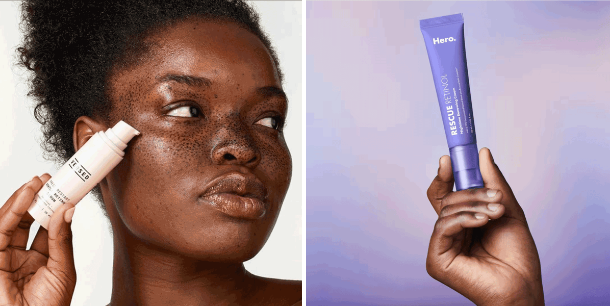Read Full Article HereDermatologists break down everything you need to know to reap the benefits and avoid irritation.
Retinol is a superstar ingredient because it’s the most proven anti-aging ingredient on Earth and it can tackle many skin concerns simultaneously. “It is like the LBD (little black dress) of skincare; it makes everything look better,” says Mona Gohara, MD, a board-certified dermatologist. The vitamin A derivative helps stimulate cellular turnover and increase collagen production, which means fewer fine lines and wrinkles, smaller-looking pores, a more even skin tone, and an increase in firmness. The drawback is that it can be irritating, especially if you have sensitive skin.
“Retinol accelerates the shedding of old skin cells and the production of new ones, which can disrupt the skin barrier and sometimes lead to dryness, flakiness, and irritation,” explains Azadeh Shirazi, MD, a board-certified dermatologist and founder of La Jolla Dermatology & Laser Surgery Center. But don’t let that scare you off; many people with sensitive skin can reap the benefits of retinol. But it helps to know what to look for and how to apply it. That’s where we come in.
What to consider when buying retinol for sensitive skin
You can find retinol in a range of skincare products, but it’s most frequently in serums, moisturizers, and oils. If you have sensitive skin, reach for “cream-based formulas, which tend to be more gentle because they’re less drying,” says Chad Hartmann, MD, a board-certified dermatologist with U.S. Dermatology Partners in Cedar Park, Texas. Also, consider shopping a formula with additional skin-loving ingredients, like ceramides to protect and strengthen the skin barrier or niacinamide to soothe, suggests Mina Amin, MD, a board-certified dermatologist in Los Angeles.
“Also, look for encapsulated retinol formulations. These utilize a slow-release technology to ensure that the retinol penetrated gradually, minimizing the risk of irritation while maximizing effectiveness,” says Shirazi. Similarly, knowing the strength of retinoids will tell you how potent a formula is and how likely it is to irritate. Here’s a helpful breakdown.
How to apply retinol on sensitive skin
Start gradually
The key to applying retinol on sensitive skin is to start with a low-percentage formula, measure a pea-size amount, and space out the nights you use it. “For the first two to four weeks, I have the patient apply the retinol only every third night to allow the skin to develop a tolerance to the drying effects,” Hartmann says. “They can then gradually increase the application frequency up to nightly if tolerated,” Gohara tells her retinol beginners to use it once a week for one week, two times a week for two weeks, and three times a week for three weeks. “This way you know when, and how much irritates you, if at all.”
Apply moisture before and after
Keeping the skin moisturized is critical. Employ the sandwich method, says Amin. This involves applying a hydrating serum, then the retinol, and then a moisturizer. Ahead, shop the best retinol for sensitive skin.
13 Best Retinols to Use If You Have Sensitive Skin
September 3, 2024








